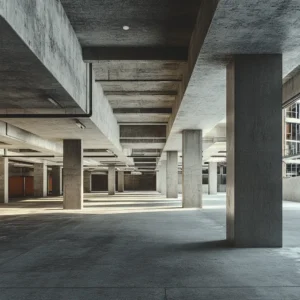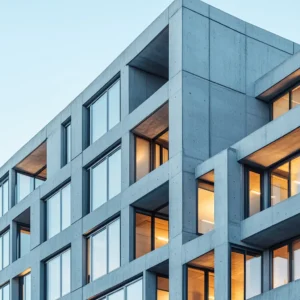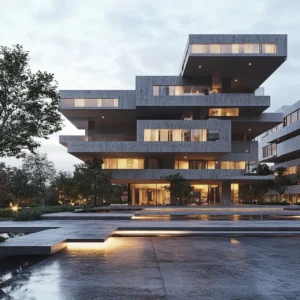Commercial Complexes
Introduction to Fiber Materials in Concrete for Commercial Complexes
Overview of Concrete Fibers
Concrete fibers are small, discrete fiber materials used to reinforce concrete. Fiberego integrates advanced fibers such as polypropylene, polyester, polyacrylonitrile, steel, and cellulose into concrete, significantly enhancing its mechanical properties and sustainability in commercial construction.
Challenges and Features of Commercial Complex Construction
Commercial complexes encompass a broad range of facilities including shopping centers, office buildings, and mixed-use developments. These structures demand high-performance materials that can withstand varied stresses while providing flexibility in design and use.

Types of Fibers and Their Characteristics
Fiberego’s portfolio includes:
- Polypropylene Fibers: Lightweight and resistant to chemical and water damage, suitable for environments with high moisture.
- Polyester Fibers: Offers high tensile strength and durability, ideal for load-bearing parts of commercial complexes.
- Polyacrylonitrile Fibers: Excellent for their thermal stability and strength, used in areas requiring resistance to high temperatures.
- Стальные волокна: Known for enhancing concrete’s load-bearing capacity, perfect for foundational and structural components.
- Cellulose Fibers: Eco-friendly choice, enhancing fire resistance and thermal insulation, supporting green building standards.
Application of Concrete Fibers in Commercial Complexes
Structural Reinforcement and Repair
Fibers improve the concrete’s structural integrity, making it ideal for retrofitting and strengthening older buildings as well as new constructions.

Crack Resistance and Waterproofing
Fibers distribute stress across the concrete matrix, reducing the formation of cracks and enhancing the waterproof qualities crucial in commercial complexes.
Enhancing Durability and Longevity
By reducing the need for repairs and extending the lifespan of concrete, fibers make commercial complexes more sustainable and cost-effective.
Enhancing Building Performance with Concrete Fibers
Increasing Compressive Strength
Fibers enable concrete to withstand higher compressive loads, a critical feature in commercial buildings.
Enhancing Flexural Strength
The addition of fibers increases the flexural or bending strength of concrete, which is vital for the dynamic loads experienced in commercial settings.

Improving Impact Resistance
Fiber-enhanced concrete absorbs and dissipates energy more effectively, increasing its resistance to impact and wear.
Innovative Applications of Concrete Fibers in Design
Green Building and Sustainability
Fiberego’s use of recyclable and natural fibers supports eco-friendly building practices and helps achieve LEED certification.
Modern Aesthetics and Functionality
With fibers, concrete is not only stronger but also more versatile, allowing for innovative designs that meet both aesthetic and functional demands.

Advantages in Construction of Commercial Complexes
Increased Construction Efficiency
Fibers can be pre-mixed and require less handling during construction, speeding up the building process.
Cost Savings in Construction
Reduced need for traditional reinforcement materials and maintenance results in significant cost reductions.
Enhanced Construction Safety
The inherent properties of fiber-reinforced concrete improve safety standards during both construction and the building’s lifecycle.
Conclusion: Comprehensive Benefits of Concrete Fibers in Commercial Complexes
Summary of Benefits
Fiberego’s fiber solutions provide comprehensive benefits, enhancing the structural, aesthetic, and operational qualities of commercial complexes.
Future Trends and Prospects
The ongoing development in fiber technologies promises even greater advancements, with potential new applications and innovations in sustainable construction practices.


